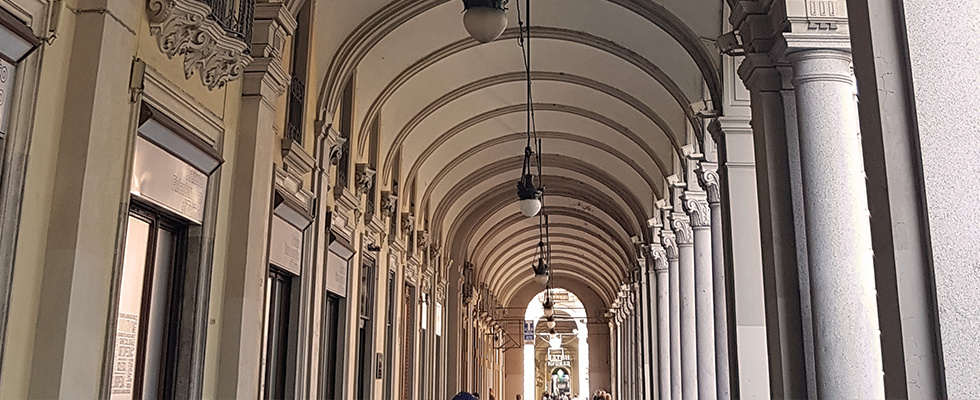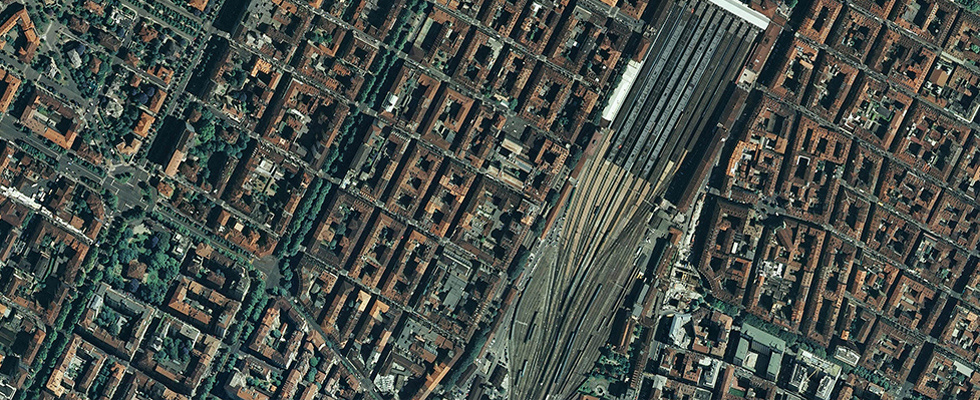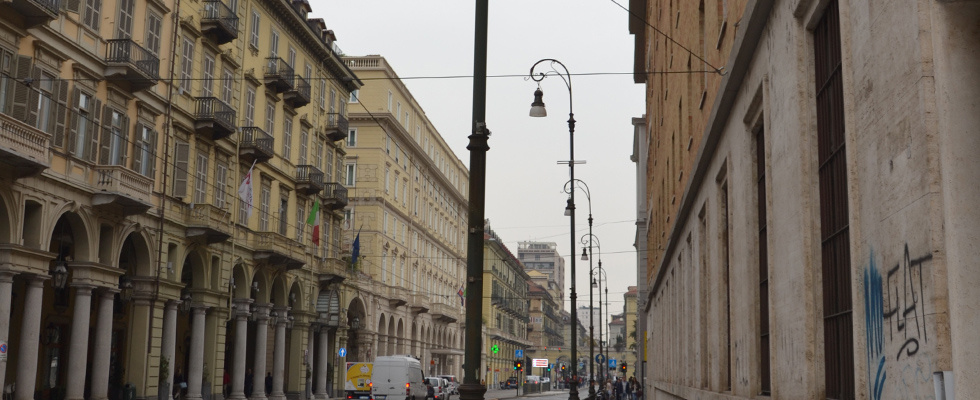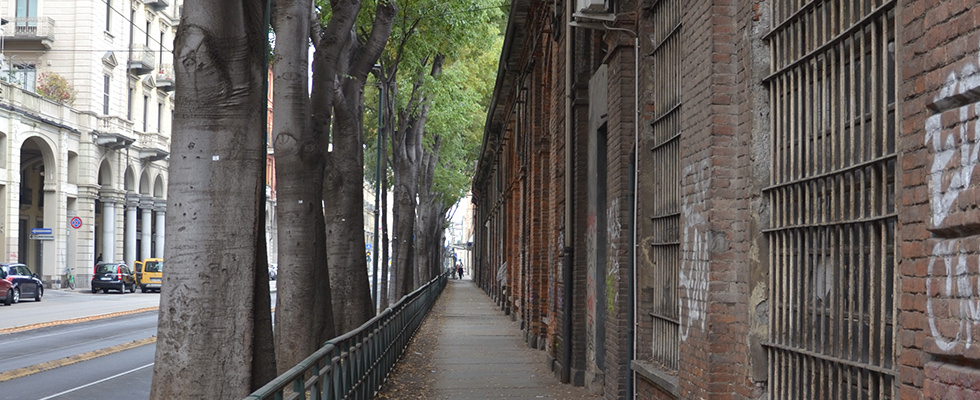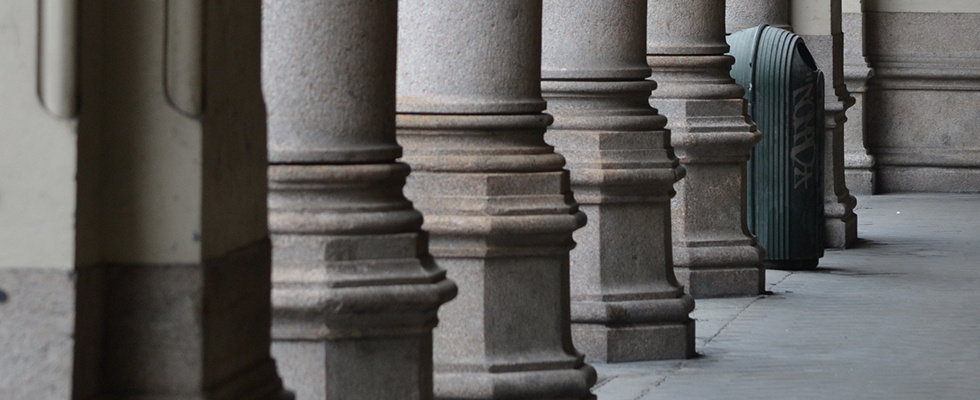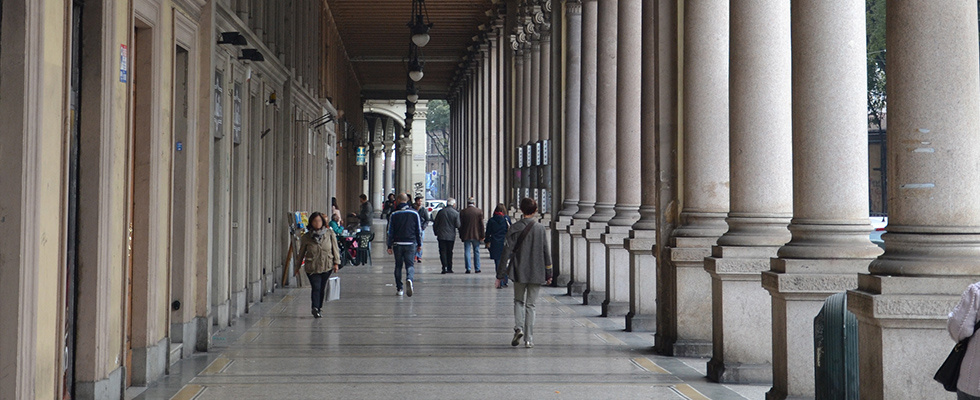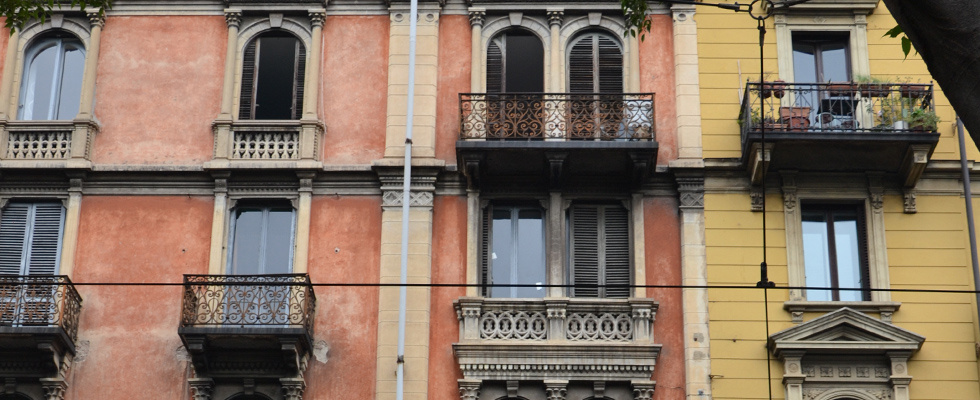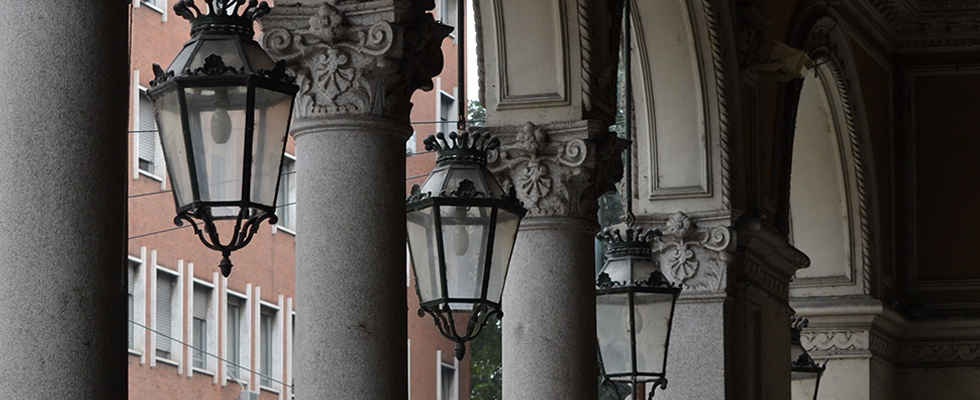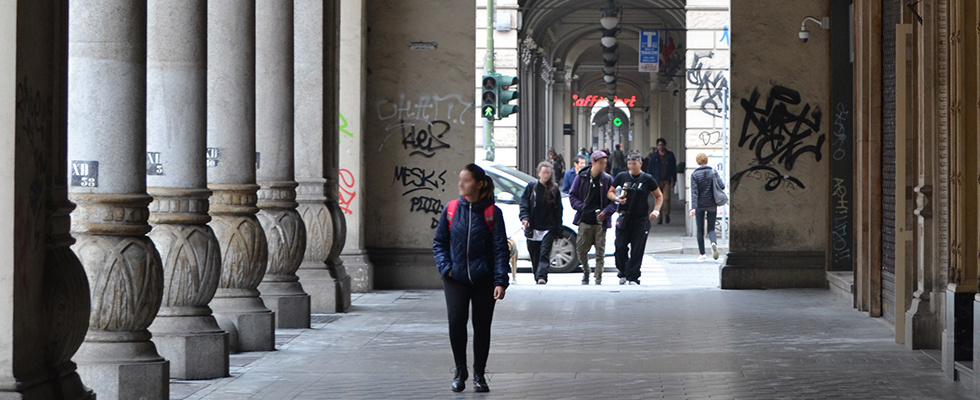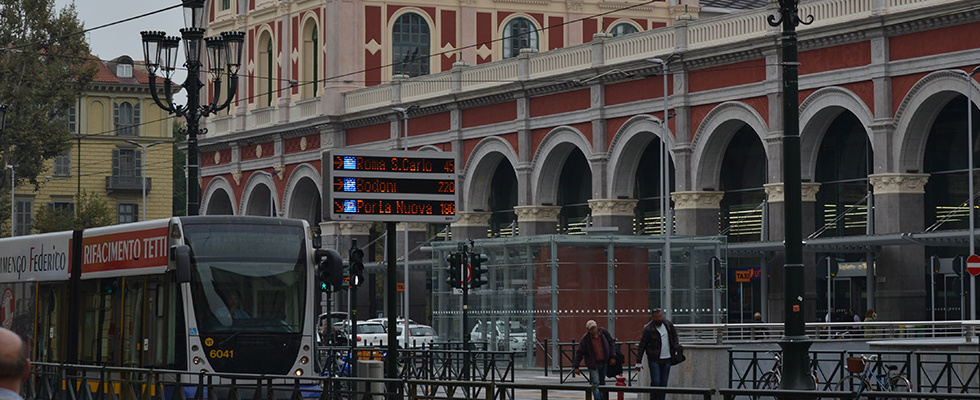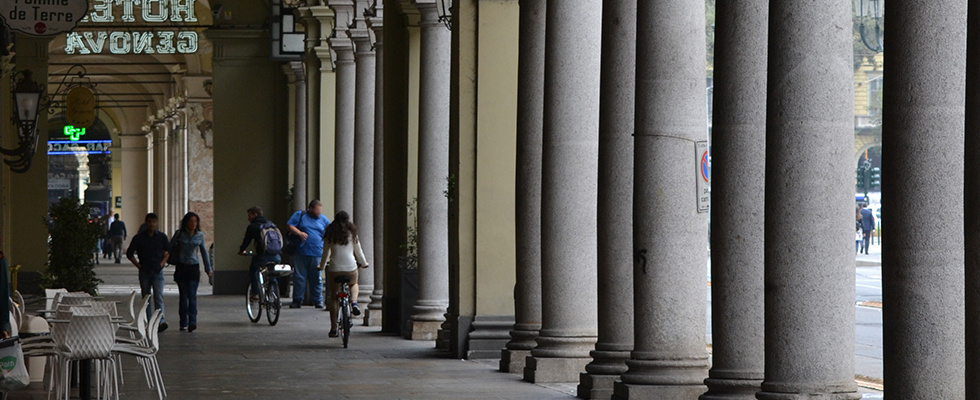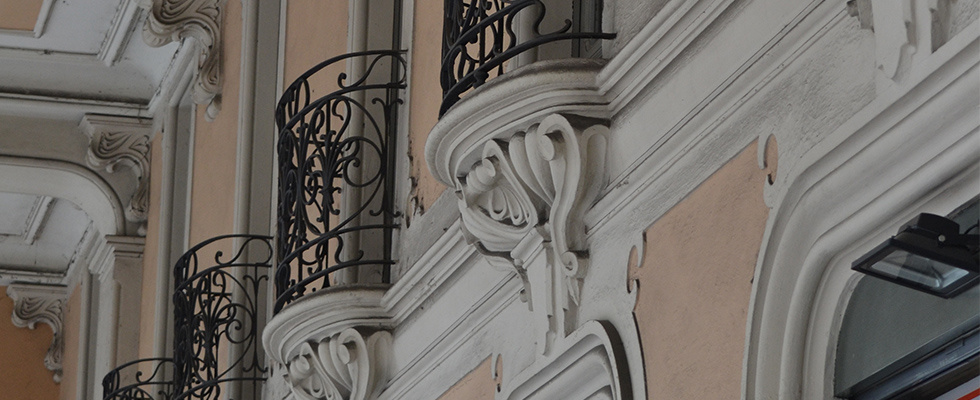Via Sacchi and Borgo San Secondo are historically significant areas, currently in a phase of transformation and exploration, and have been the subject of research and experimentation in recent years.
The early stages of VIA SACCHI – BELOW AND BEYOND THE ARCADES and the “Call for Concept” (2017–19) enabled an international dialogue with students from universities of Architecture, Design, and Art, focusing on a real case study in urban regeneration: the public space and arcade system of Via Sacchi in Turin, an area considered a “periphery of the city center,” facing commercial decline.
The second phase (2017–20), the Via Sacchi “Living Lab”, deepened the conversation with experts, administrators, citizens, and students, exploring future scenarios for a city built on creativity, sustainability, and inclusion. This phase focused on new functions and ways of using the space, involving various components of Via Sacchi’s urban fabric.
The third phase initiates urban regeneration through the promotion of public art.
Mural public art contributes to enhancing the street’s appearance both day and night. It plays a role in regeneration processes by improving the perceived quality of public space and fostering a new identity and sense of place branding.
PORTICI D’ARTISTA (ARTIST'S ARCADES) and ARTE IN TRANSITO (ART IN TRANSIT) present the first outcomes of a process aimed at introducing new functions and boosting the attractiveness of the Borgo San Secondo neighborhood.
“Portici d’Artista” (2021–23) focused on the shutters along Via Sacchi, using mural art interventions by emerging artists from the Albertina Academy of Fine Arts in Turin. The themes revolved around cultural memory and inclusion. Over two years, the project brought 23 artworks to the street—almost 15% of the shutters lining this historic kilometer of arcades. It was a participatory process involving young artists, shopkeepers, property owners, citizens, and curators, all contributing to the enhancement and rediscovery of Via Sacchi within the framework of Turin’s Urban Art Plan.
“Arte in Transito” (2023–25) continues this journey along Via Sacchi, using mural public art to support urban regeneration, enhance places, and promote youth creativity. The first 11 mural panels will be installed on the blank walls along the railway side of the street on July 14, 2024. The remaining 11 panels will be completed by July 2025.
HISTORY
Arcades represent a significant architectural and cultural heritage typical of European cities, from the late Middle Ages to the present day. This typological system has evolved over centuries to serve public and commercial purposes. The public use of privately owned ground has become a tool for shaping urban design and representing the city and its identity.
Turin boasts a continuous 12 km stretch of historic arcades. The Via Sacchi project originated in the urban development of the 19th-century Porta Nuova area, coinciding with the construction of the city’s main railway station and the extension of the portico system that characterizes the Baroque city center.
Stretching nearly 1 km from north to south, Via Sacchi features arcades on its western side and is bordered to the east by the railway station and service buildings. The system continues on the opposite side of the station, with the porticos of Piazza Carlo Felice and the first section of Via Nizza.
The arcaded side of Via Sacchi was constructed in stages: the first section dates to the 1860s–70s, with further development between the 1880s and 1910s. A clear contrast emerges between the arcaded side—marked by decorative diversity and coherent design—and the railway-facing side, which is used for secondary functions and is architecturally fragmented and underutilized. The exceptional environmental and visual character of the arcaded axis remains legible until the edge of the continuous urban fabric.
Between the 1910s and 1960s, Via Sacchi and Borgo San Secondo stood out as elegant areas for walking and leisure, with commercial and cultural venues, high-end entertainment spaces, theaters, and cinemas. In contrast, Via Nizza and Borgo San Salvario developed as more commercially and industrially oriented neighborhoods.
Since the 1960s, the rise of new urban hubs has led to a gradual decline in residential and commercial quality. The aging of commercial infrastructure, its replacement with low-tier service and social enterprises toward the south, and the commercial desertification of the last two decades—resulting in nearly 25% of storefronts vacant, with a slight increase from 2017 to 2022—are linked to reduced pedestrian and vehicle flow, a decline in intermodal connections, the lack of a clear area identity, and the impact of the pandemic.
Social, environmental, and economic issues are especially visible at ground level and in public spaces. An additional area of deterioration is the narrow underpass in the south, which lacks functionality and lies between the overpass of Corso Sommeiller and the railway infrastructure.
News & Schedule
ARTE IN TRANSITO - FASE 2
Promenade e inaugurazione. Gli ultimi 11 pannelli di arte pubblica sui muri ferroviari di via Sacchi.
ARTE IN TRANSITO – FASE 1
Promenade e inaugurazione. I primi 11 pannelli di arte pubblica sui muri ferroviari di via Sacchi
PORTICI D'ARTISTA - FASE 2
Incontro e dialogo, 23 serrande d’arte pubblica completate sotto i portici di via Sacchi
PORTICI D'ARTISTA - FASE 1
Passeggiata e inaugurazione delle prime serrande d’artista

